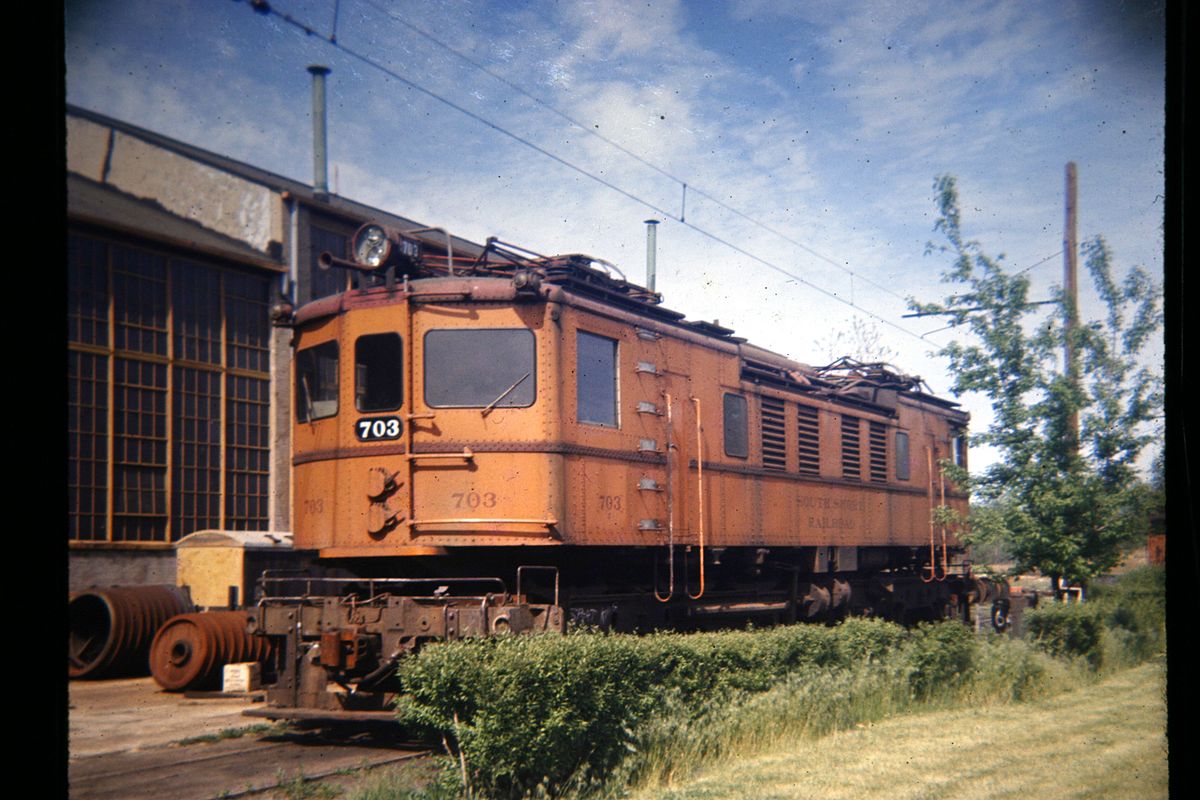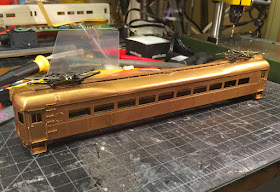One thing model railroaders have always loved to talk about is the demise of the hobby. Go look through letters to the editor in 40- or 50-year-old Model Railroader magazines (easier than ever now, what with
MR's new paywalled archives) and you'll see how the unstoppable menace of plastic ready-to-run locomotives or slot car racing or whatever was killing the hobby.
Nowadays, lamentations over the decline of the hobby take place on the internet and assume the form of a variety of recurring concerns:
- The gradual extinction of the local hobby shop
- The move of manufacturing to China and attendant uncertainties due to insuperable market forces and long distance logistics
- The increasing trend of pre-ordering, short runs, and direct sales for new products
- The disappearance of good old fashioned solvent based paint, lead in solder, and whatever other hazardous material we used to use
- The high price of everything
- Greedy, profiteering manufacturers who routinely choose to dupe earnest and serious model railroaders with deeply flawed and inaccurate models
- Mediocrity and/or decline of flagship model railroad publications
- Aging/dying model railroaders
Joe Fugate, publisher of Internet-based upstart online model railroad magazine
Model Railroad Hobbyist, took on that last recurring concern about aging model railroaders in the magazine's latest "Reverse Running"column. As the name implies, Reverse Running typically features an unusual, unconventional, or unpopular take on some aspect of the hobby. Joe's March column, titled
"The End of Youth in the Hobby", takes aim not at the number of old dudes at your typical train show or club, but at the closed-mindedness of many older model railroaders when it comes to new-fangled tech things.
In particular, Joe chastises the old guard for not being more receptive to innovations that might interest younger tinkerers and nascent model railroaders, such as mobile phone apps for controlling trains or using mainstream social media like Facebook to connect and share with other model railroaders. The
comments about Joe's column are, as is often the case with good internet-based opinion writing, as interesting as the column itself.
A significant part of the problem Joe points out is internet manners. The internet allows people to express all kinds of regrettable things one would never say face-to-face to other humans. The internet also allows one to find oneself in an online community or mob of like-minded ignoramuses who make hostility or studied stupidity seem normal. It's hard to imagine model railroaders of a certain age at a public layout exhibition, club, or hobby shop actually saying something confrontational, insulting, or dismissive to directly to a young or new model railroader, though I wouldn't rule it out. I've known some anti-social and combative modelers and model railroaders over the years, but they are a rare exception rather than typical or dominant--warmth, encouragement, and geniality are more the norm among model railroaders.
But Joe's main point is that the anti-technology stodginess of model railroading's old guard is (potentially) killing the hobby. By my lights, it's self-evident that our hobby has been slow to join the internet and digital revolution. We still have a few holdout manufacturers who steadfastly refuse to have an internet presence. A significant number of suppliers have web sites that are so poorly designed that they do their own fine and wonderful products injustice, and they miss an important sales and marketing opportunity by not offering e-commerce. There are clubs and associations that only take personal checks via snail mail, and don't avail themselves of any of a variety of electronic payment methods. The Android and iOS app stores have a tiny number of model railroad-related apps available. Model railroad-specific uptake on the big social media platforms like Facebook and Twitter is tiny. We have only one native digital model railroad publication.
And as Joe points out, for all the wonders and capabilities of smart phones and the rising 'internet of things', there is a persistent digital divide between model railroading and the general direction of tinkering and making things in the real world. Why aren't we controlling trains or programming DCC decoders with our smart phones or from a web browser? Why aren't our operations and planning gurus regularly modeling and simulating on computers to determine how long that passing track should be, or how much staging is needed, before ever building benchwork or laying track? We can print a whole HO scale interurban, but not a white or yellow decal? Why isn't anyone building super lightweight benchwork from some new resin fiberboard or plywood material cut in a CNC rot or laser cutter down at their local community maker center? (I think I might look into that last one . . . )
I agree with Joe: model railroading should catch up to the 21st century. In the last century, our big magazines and associations helped bring seriousness and legitimacy to our hobby. This century is different and we need to make sure we evolve our media, technology, and organizational tools to keep our efforts contemporary, modern, and resonant. I've always imagined that the presence of
Model Railroader or
Railroad Model Craftsman on newsstands in the sixties and seventies as a kind of ambassador to the public that put our hobby's best foot forward. Our 21st century digital presence should also be a worthy ambassador, and how we make and control our trains should be as well.
But I don't think model railroading is dying. Some old standby institutions are changing, but the hobby is not dying. I'd rather be model railroading today than any other time I can think of. Connecting, sharing, and transmitting knowledge between modelers across the miles has never been easier thanks to online communities, blogs, podcasts, social media groups. The latest RTR offerings compare very favorably to even the best, factory painted brass of two or three decades past. Local hobby shops may be fading away, but the new commerce of model railroading favors model railroader consumers in many key respects. An ecosystem of online hobby dealers--many associated with Ebay and Amazon---make sourcing materials and supplies even more convenient than ever, in some particular ways. Ebay also gives individual model railroaders a way to connect supply and demand for the rare and specialized that had previously not been possible--I can't imagine how I would have built a roster of South Shore passenger equipment without Ebay to provide a more or less safe and reliable way to buy and trade across the miles.
The demise of model railroading will always be greatly exaggerated. But we could do a better job of welcoming new ideas and putting the hobby's best foor forward.














































